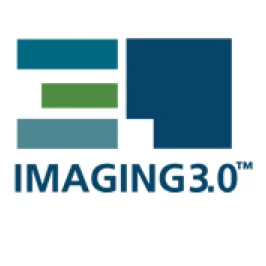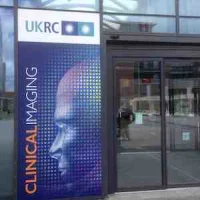Adding value in radiology can be as simple as remembering to introduce yourself when you contact a referring doctor, according to Nathaniel Margolis, MD and colleagues, writing in the Journal of the American College of Radiology. As healthcare transitions from volume-based to value-based (Imaging 3.0), they suggest 15 practical ways for trainees to add value.
The 15 items were developed by residents and fellows by reviewing the available information on Imaging 3.0 available on the American College of Radiology’s website. The suggested activities relate to the steps in the imaging value chain.
Imaging Considered
1. Build rapport with other specialties
Joining a hospital committee is a great way to develop a broad perspective, and prepares trainees for future multidisciplinary conferences and hospital-wide deliberations.
2. Provide referring physicians with evidence-based opinion
Consult the electronic medical record to gather relevant history before protocolling studies, and use tools such as Appropriateness Criteria or Choosing Wisely to support your recommendation.
3. Facilitate patient flow
Keep an eye on ordering and emergency department dashboards, inform radiology technicians about impending urgent exams and prioritise. “The time between order entry and image acquisition…often deserves as much attention as image interpretation.”
4. Communicate effectively
5. Educate yourself on the cost of imaging
Image Acquisition and Interpretation
6. Interact with patients
Take time to answer patients’ questions about radiation or other safety concerns and explain that you are a doctor working on the imaging aspects of their problems.
Emphasize that you are an imaging specialist working with patients’ care teams rather than say “I’ll get the results to your doctor.” Consider using a desktop computer or tablet to show images when explaining a procedure and obtaining consent.
7. Remember radiation safety
8. Avoid unnecessary repeat examinations
Retrieve and review all prior studies. “Be aware of your hospital’s network and the imaging acquisition and distribution platforms at each site, and help develop processes to easily obtain and access images from these sites.”
9. Integrate quality into daily practice
10. Craft meaningful reports
Correlate images with information from the electronic medical record. Separate incidental findings from actionable findings.
Results Reporting and Patient Understanding
11. Communicate certainty and uncertainty by seeking a conversation with the referring physician rather than hedging or giving a long differential diagnosis in your report. Imaging synopsis tools are a great investment for your institution to consider.
12. Issue standardised, actionable recommendations
13. “Do nothing” is a highly valuable recommendation
14. Reduce delays in patient care by calling the referring physician with time-sensitive results
15. Show and tell your unique skill set as a radiologist by presenting images at multidisciplinary conferences and bringing referring physicians into the reading room to discuss imaging findings.
The 15 items were developed by residents and fellows by reviewing the available information on Imaging 3.0 available on the American College of Radiology’s website. The suggested activities relate to the steps in the imaging value chain.
Imaging Considered
1. Build rapport with other specialties
Joining a hospital committee is a great way to develop a broad perspective, and prepares trainees for future multidisciplinary conferences and hospital-wide deliberations.
2. Provide referring physicians with evidence-based opinion
Consult the electronic medical record to gather relevant history before protocolling studies, and use tools such as Appropriateness Criteria or Choosing Wisely to support your recommendation.
3. Facilitate patient flow
Keep an eye on ordering and emergency department dashboards, inform radiology technicians about impending urgent exams and prioritise. “The time between order entry and image acquisition…often deserves as much attention as image interpretation.”
4. Communicate effectively
- Always introduce yourself on the phone
- When a referring physician comes to the reading room, pull up relevant images and point out the pertinent positive and negative findings.
- Make sure the referrer understands how you arrive at conclusions, and always offer to answer any questions.
5. Educate yourself on the cost of imaging
Image Acquisition and Interpretation
6. Interact with patients
Take time to answer patients’ questions about radiation or other safety concerns and explain that you are a doctor working on the imaging aspects of their problems.
Emphasize that you are an imaging specialist working with patients’ care teams rather than say “I’ll get the results to your doctor.” Consider using a desktop computer or tablet to show images when explaining a procedure and obtaining consent.
7. Remember radiation safety
8. Avoid unnecessary repeat examinations
Retrieve and review all prior studies. “Be aware of your hospital’s network and the imaging acquisition and distribution platforms at each site, and help develop processes to easily obtain and access images from these sites.”
9. Integrate quality into daily practice
10. Craft meaningful reports
Correlate images with information from the electronic medical record. Separate incidental findings from actionable findings.
Results Reporting and Patient Understanding
11. Communicate certainty and uncertainty by seeking a conversation with the referring physician rather than hedging or giving a long differential diagnosis in your report. Imaging synopsis tools are a great investment for your institution to consider.
12. Issue standardised, actionable recommendations
13. “Do nothing” is a highly valuable recommendation
14. Reduce delays in patient care by calling the referring physician with time-sensitive results
15. Show and tell your unique skill set as a radiologist by presenting images at multidisciplinary conferences and bringing referring physicians into the reading room to discuss imaging findings.
References:
Margolis NE, Mackey RA, Sarwar A, Fintelmann FJ (2015) 15 practical ways to add value in daily practice: an imaging 3.0 primer for trainees. J
Am Coll Radiol, 12(6): 638-40. doi: 10.1016/j.jacr.2015.03.002.
Latest Articles
Imaging, Radiology, Value
15 ways to add value in imaging










